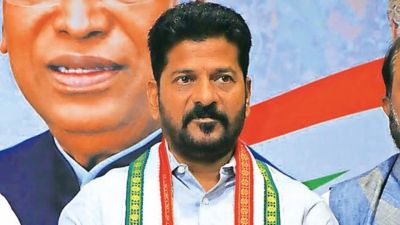Put Putin in place
Russian president Vladimir Putin's visit to India would have generated at least some euphoria had it not followed closely on the heels of ...

Russian president Vladimir Putin’s visit to India would have generated at least some euphoria had it not followed closely on the heels of a more glamourous US president Bill Clinton’s immensely successful trip to India, and Prime Minister Atal Bihari Vajpayee’s equally significant mission to Washington. With Indo-US relationship blossoming at a new high, Putin’s visit almost seems like that of an old time lover snuggling over and attempting to make up. Surely the old affair was with a former superpower, the Soviet Union, and not with Russia, a country which is a distant poor cousin. After the Soviet Union was dismantled in the 1990s, several regions broke off and the rump Russia which was left with half the GDP ended up inheriting all the problems. Today, the economy of Russia, a polity struggling to stay intact, is less than a tenth of the US economy, in fact, one-fifth that of China. Although Putin is visiting India to sign a declaration of strategic partnership, it is unclear what that will involve.
The Soviets cosied up to India ever since its old comrade, China, moved close to the US. The USSR led by Brezhnev pushed for closer ties with India given the surge in defence sales to this country. The signing of the Indo-Soviet Friendship Treaty in 1971 just before the creation of Bangladesh was the highwater mark. However, one must not forget that it was the USSR which asked India to put an end to the war of liberation. All through, the Soviets gained much more from us than we from them. They might have invested in the power, oil and steel sectors in India, but we were the only democracy to support them on Afghanistan.
Ever since the Soviet Union collapsed, Indo-Russian relationship entered a low ebb. While the rupee-rouble troubles were definitely the lowest point in the trough, the structural crisis that broke the USSR made Russia extremely inward looking. While Gorbachev was too preoccupied with domestic problems, Boris Yeltsin began viewing Russia more and more like an European power and continued to look up to the US to bail Russia out of the impending crisis. It is only when Russia got disillusioned with the West that it began building a new Asian axis, to include China and India, against the threat from a unipolar world. As a result, the Shanghai Five (Russia, China and the three Central Asian Republics) is considering including India in the new alliance. Uniting them is the dangerous threat from the Afghanistan-Pakistan narco-terrorists. Witness the recent Shanghai Five’s strong statement against the Taliban. India, facing a low intensity war in its neighbourhood, needs to unite with all against a global threat ofterrorism. But neither is today’s world unipolar, nor is India threatened by the West. In fact, in the post-Cold War era there has been a radical change in the international security environment. Since democracies are known for not attacking each other, India, the largest democracy, has become the focal point of Western alliance. Today Germany and Japan are competing with the US to tie up with this country. With one of the most sought after markets in the world, a competitive IT sector and an abundance of technical and managerial talents, Russians need us more than we need them.





- 01
- 02
- 03
- 04
- 05


























